Inside the Student-Built Broadcast That Transformed Dakota Valley Esports
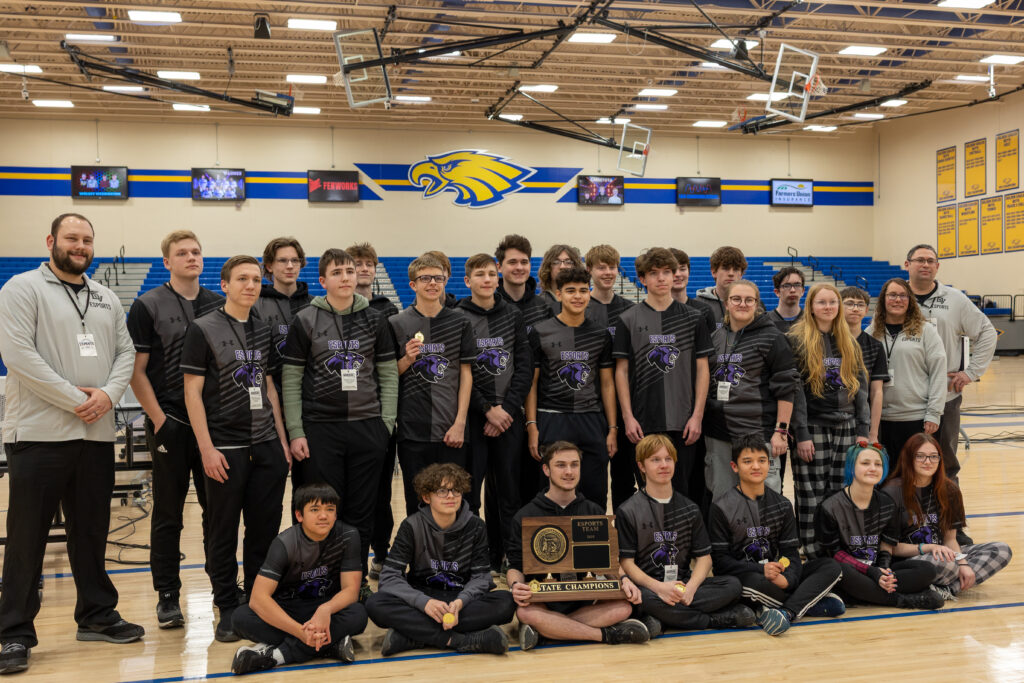
Eli Honner of Dakota Valley proudly holding the SDHSAA Esports State Champion plaque at the 2024 State Tournament.
Esports is still often viewed as just a game — a fun hobby, maybe even a distraction. But for students in the Fenworks Scholastic Esports Program, it’s become something far more: a platform for leadership, creativity, and real-world skill-building.
At Dakota Valley High School, student Eli Honner is a clear example of that potential. What began as a personal interest in broadcasting turned into a way to build technical skills, grow confidence, and reshape how esports was supported and celebrated in his school.
Eli didn’t find his place by competing. He carved out his own path by producing streams, creating graphics, and managing his team’s social media, bringing new visibility and energy to an already strong esports culture at Dakota Valley.
Meet Eli – Dakota Valley’s Resident Broadcaster
Eli is a former student of Dakota Valley High School and is now an incoming freshman at Augustana University. His path is a reminder that you don’t need to be a “gamer” to benefit from scholastic esports.
Eli plans to major in media production with a focus on sports broadcasting, a direct result of the skills and experience he built during high school.
He has been asked to play a major role in launching his new campus’s first-ever esports broadcast, demonstrating the significant impact his scholastic esports journey has had on both himself and those around him.
Through opportunities provided by Fenworks and SDPB (South Dakota Public Broadcasting), Eli developed a strong broadcasting foundation that gave him a real head start toward college and a future career in media.
“I’ve been in video production for four years,” Eli says, “but SDPB (South Dakota Public Broadcasting) and esports definitely took it further.”
Esports at Dakota Valley High School
When Dakota Valley’s esports program first launched with Fenworks, Eli attended a few practices — but the competitive side wasn’t what drew him in. He was more interested in how he could use his broadcasting skills to contribute to the team.
“I wasn’t even sure if there’d be an opportunity for streaming,” Eli says. “At first I thought…. I’ll just try playing Rocket League and see what happens.”
That curiosity led to a simple question. Eli approached Dakota Valley GM Michael Oberg and asked if he could try broadcasting matches.
“The coach just handed me a PC and said, ‘Oh, For Sure, Do Your Thing.’ From there, I built everything.”
From that moment on, Eli’s role as a broadcaster helped reshape how the school and its community viewed esports not just as competitive gaming, but also as a creative and collaborative opportunity for their students.
Thanks to Dakota Valley’s support of student-led initiatives and the flexibility of the Fenworks Scholastic Esports League, Eli had the freedom to experiment, lead, and build something of his own.
Over the next two years, he developed custom overlays, managed live productions, and expanded the school’s entire broadcasting setup. Every season, he stepped outside his comfort zone, adding more polish to the streams and becoming a key part of the program’s success, setting the stage for others to follow.
Dakota Valley’s First Esports Broadcast
Once Eli got the green light to stream DV’s esports matches each week, everything changed, and things only got better from there.
Each year, Eli redesigned the DV’s stream overlays, automated graphics, and created real-time score bugs from scratch. (This is very hard to do, trust us.) His broadcast setup evolved from having only two open applications open at a time to a fully equipped production powerhouse, complete with live commentary, remote controls, and custom/interactive stream interfaces.
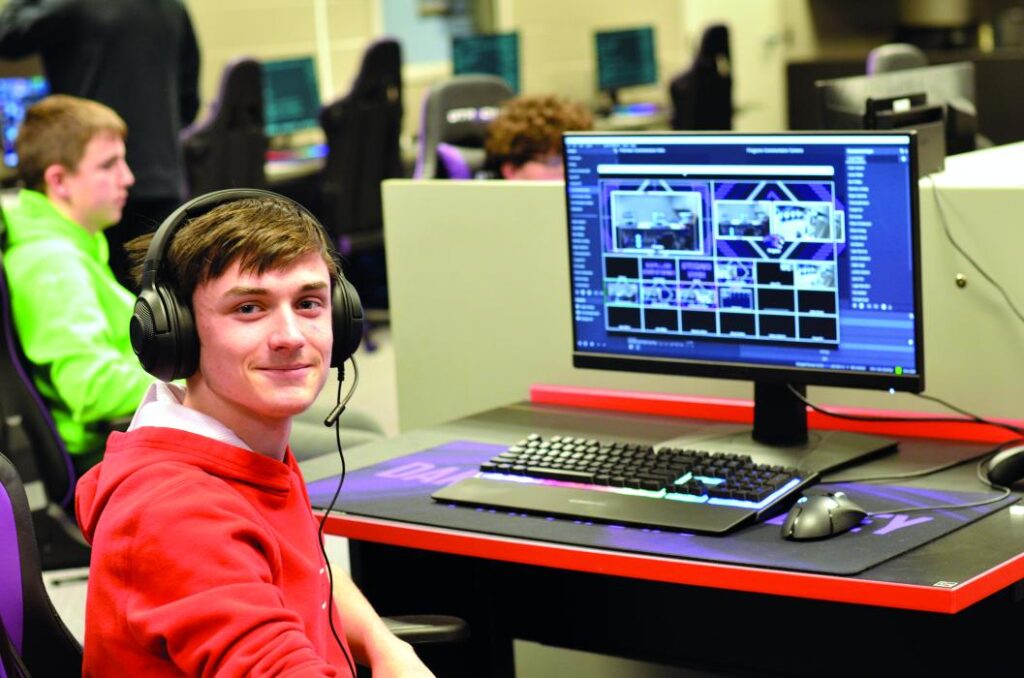
Eli Honner at the original Dakota Valley esports streaming setup (2023).
Photo courtesy of the Lead Courier Times, featured in the article “A New Sport Emerges in the Age of Technology.”
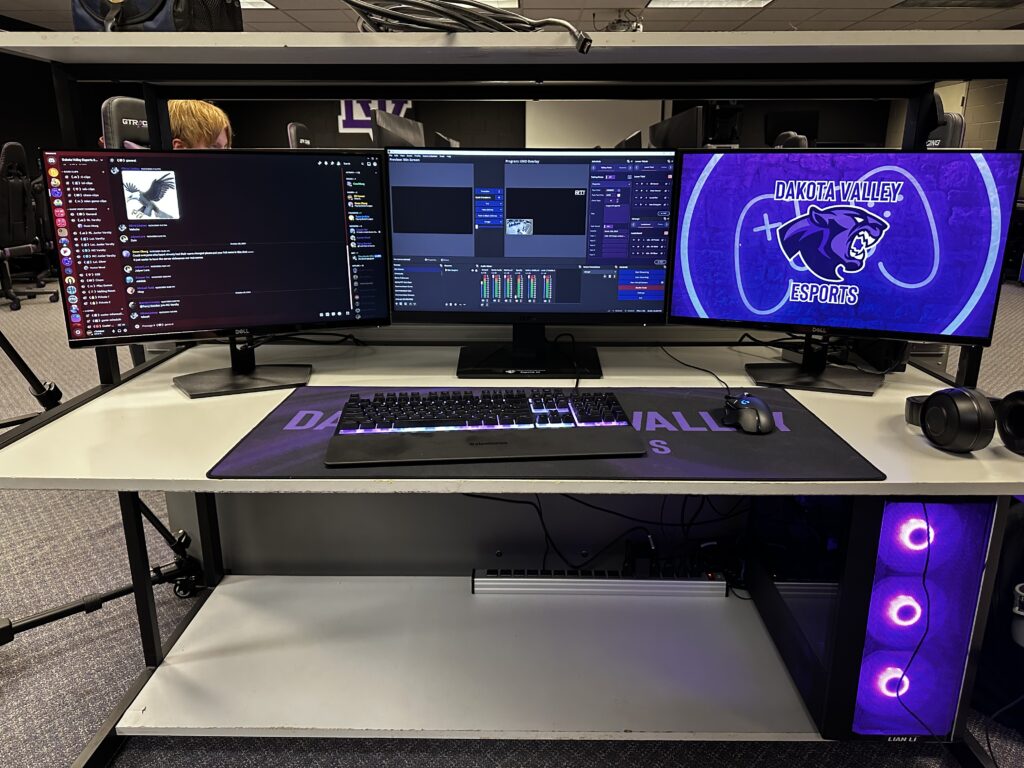
Photo submitted by Eli Honner showcasing the upgraded broadcasting setup from his senior year (2025), featuring numerous visual and technological improvements.
“Multitasking became my biggest skill,” Eli says. “By the end, I wasn’t only streaming, I was also coordinating multiple devices, software, and people, all at once.”
Eli remembers the fast-paced energy of the esports lab: bouncing between livestreams, communicating with student commentators in real time, and celebrating with teammates after each match. It became a space where he built confidence, grew his skills, and found his place on the team.
In his final season at DV, Eli took on the responsibility of training his classmates who would be taking over the broadcast. He wanted to leave behind everything they would need to keep the Dakota Valley Esports streams running strong.
This year will be the first without Eli behind the controls, but thanks to the foundation he helped build, DV students are ready to carry it forward.
You can catch Dakota Valley’s esports streams here – https://www.youtube.com/@DakotaValleyEsports/streams
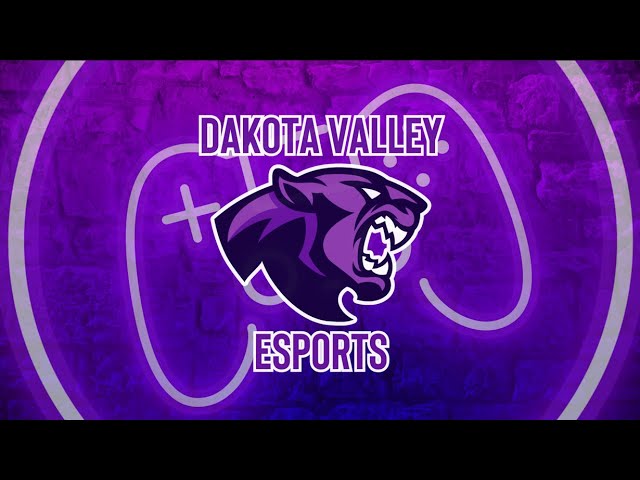
Connecting Esports & Community
Broadcasting wasn’t just a personal passion for Eli. While it helped shape his future, the impact reached far beyond him. Once the team began livestreaming matches and regularly posting updates on Facebook, the entire Dakota Valley community started to take notice, with students, parents, and school leaders all becoming engaged.
“Not every parent could make the drive to Aberdeen for the SDHSAA state tournament last year,” Eli says. “But through our livestreams and Facebook updates, they could follow along, celebrate, and support.”
The school’s booster club, main Facebook page, and parents across all grade levels began to tune in just like they would for any traditional sport.
“Some of our posts hit 3,000 views,” Eli says. “Even students who didn’t play esports were watching.”
And it wasn’t just online matches that had more fans. Eli recalls, during a tournament in Rapid City, the school played its esports match on the Commons’ big screen during lunch. Students cheered like it was their homecoming Football game – an incredibly stark difference from the stereotype we talked about earlier.
Not only does esports break that stereotype, but broadcasting takes it another step up and gets everyone involved.
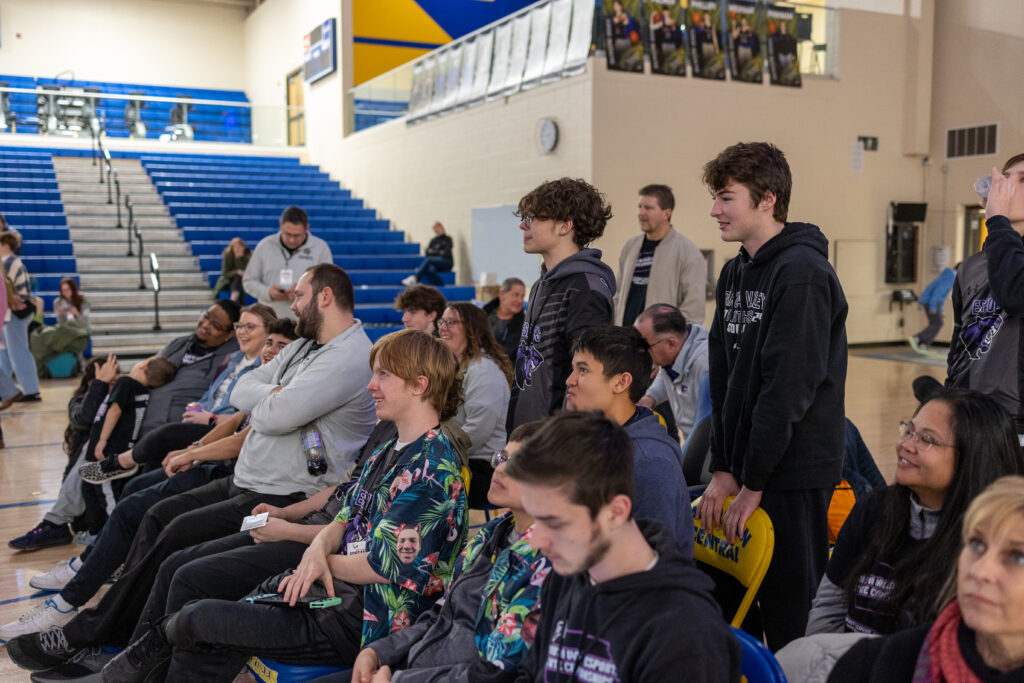
Dakota Valley students, parents, and teachers cheer on their Rocket League team during the finals at the 2024 SDHSAA Esports State Tournament. In front, Eli Honner supports his team while providing live updates for fans on Facebook.
Breaking the Esports Stereotype
Esports can carry a lot of assumptions, mainly that it begins and ends with playing games. Step inside a scholastic esports program, though, and you’ll find something very different. Students are designing graphics, running broadcasts, and leading projects that look more like career training than casual gaming.
Eli Honner saw that firsthand at Dakota Valley. “Broadcasting gave students like me a way to be involved, even if we weren’t playing competitively,” he says. What started as a way to contribute turned into a space where he built connections and helped others grow.
“It felt like a family,” Eli recalls. “We had open lab nights, and we were always supporting each other. It was more than just games.”
That sense of ownership and community is what breaks the old stereotype. For Eli, it came through broadcasting. For others, it might be commentary, design, or team management. Either way, esports is proving to be much more than what people assume.
Where Did Scholastic esports Take Eli?
Today, Eli is stepping into college broadcasts with confidence, using the same equipment he first learned on in high school esports.
“I’ve been running replays, doing behind-the-scenes setup, and I already know how to use the gear here,” he says. “It’s definitely given me a head start.”
This season, Augustana is launching a brand-new esports broadcast, and they’ve already invited Eli to help build and lead it.
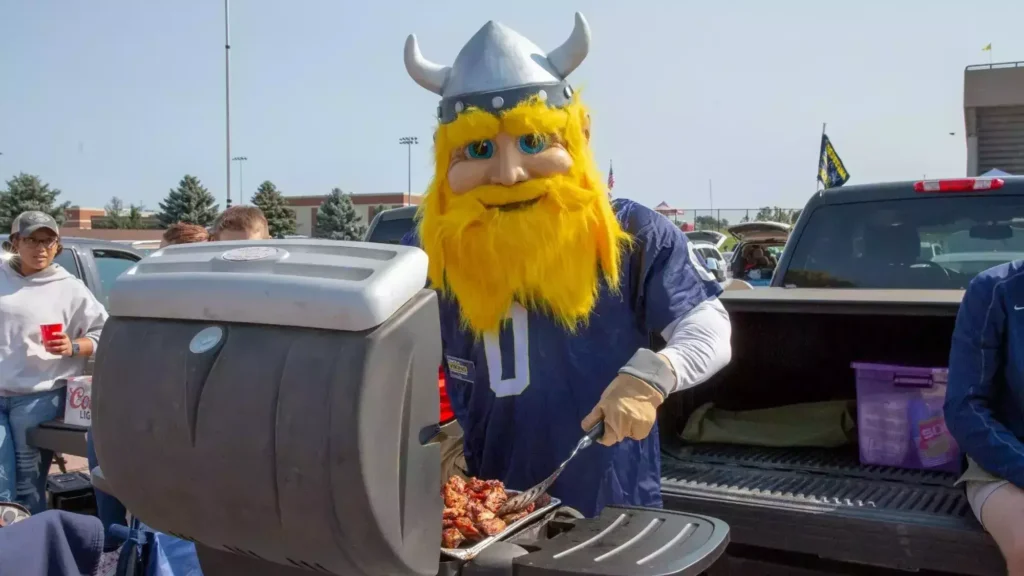
Augustana University’s Mascot, Ole the Viking.
Image courtesy of Augustana University Athletics.
And if that wasn’t impressive enough, Eli is also contracted with South Dakota Public Broadcasting (SDPB), the same organization that once streamed his high school team during the SDHSSA Esports State Tournament. It’s a full-circle moment that shows just how far this path has already taken him.
Eli’s Message for Students & Parents
Eli’s biggest advice to students? Don’t wait. Just ask.
“The first day, I didn’t know what I could do. But once I asked to broadcast, everything opened up. If you have an idea — ask. You never know what’ll happen.”
And for parents who still see esports as just screen time:
“It’s teamwork. It’s a responsibility. It’s communication. It’s more than games. It’s learning how to work with people, lead, and build something meaningful.”
Want to hear more about Eli’s journey through broadcasting? You can reach him at [email protected]
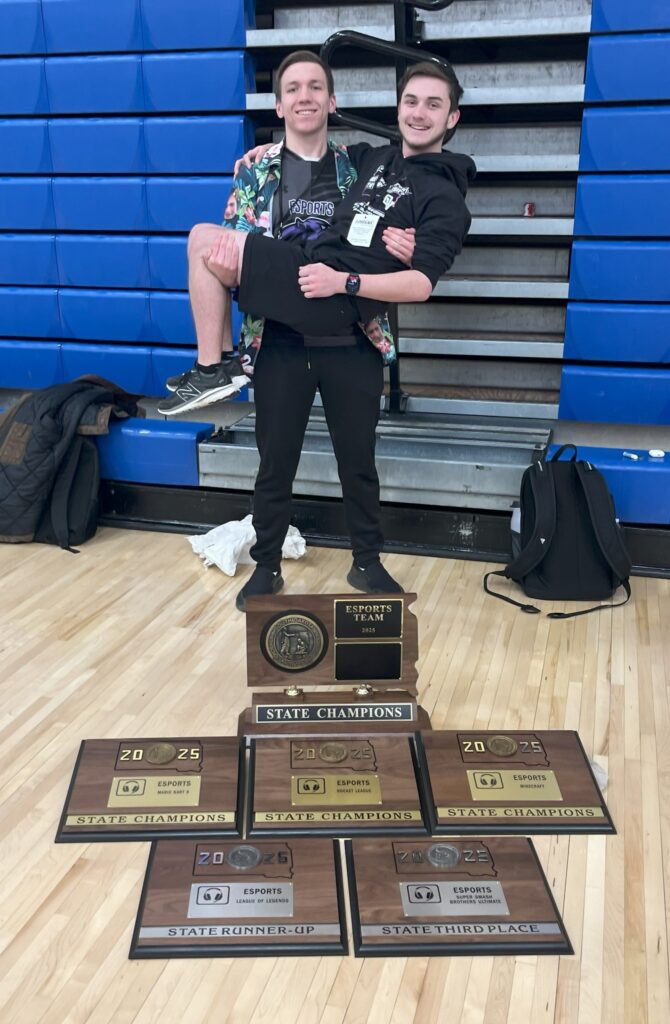
Dakota Valley’s Aiden Keenan, “Bridal Carries” teammate Eli Honner, in front of all six state championship plaques during the team’s celebration.
Photo courtesy of Dakota Valley Esports Facebook Page.
Opening Doors Through Fenworks Scholastic Esports
Eli Honner’s journey is a powerful reminder of what can happen when students are given real ownership in their learning. With support through our Fenworks programs, he turned a personal interest into a career path; gaining hands-on experience, building confidence, and finding his place in a growing community.
Esports gave Eli the chance to discover broadcasting and turn it into something bigger for his future.
Your students already love gaming. Now imagine what they could build with the same opportunity.
Ready to bring esports broadcasting to your school?
The myth that gaming doesn’t lead anywhere? Students like Eli are proving otherwise.
Give your students the tools to discover what they’re capable of.
